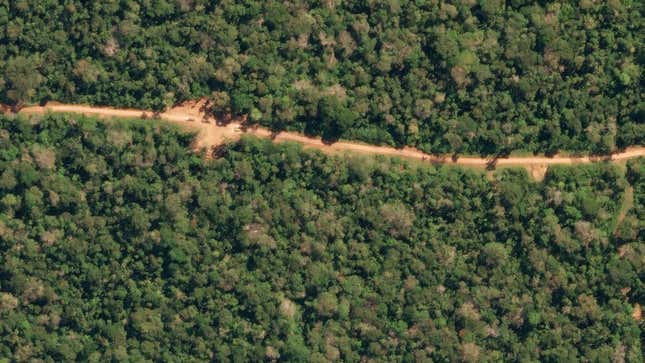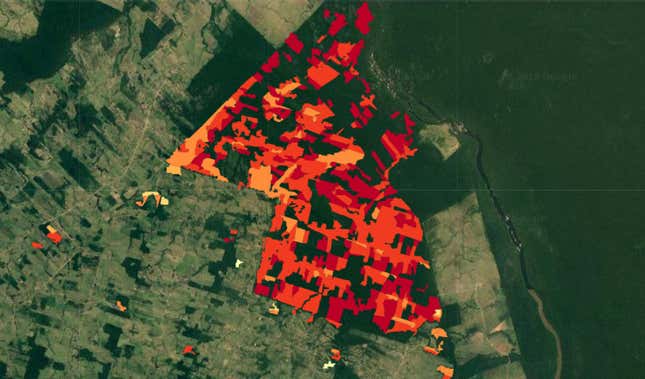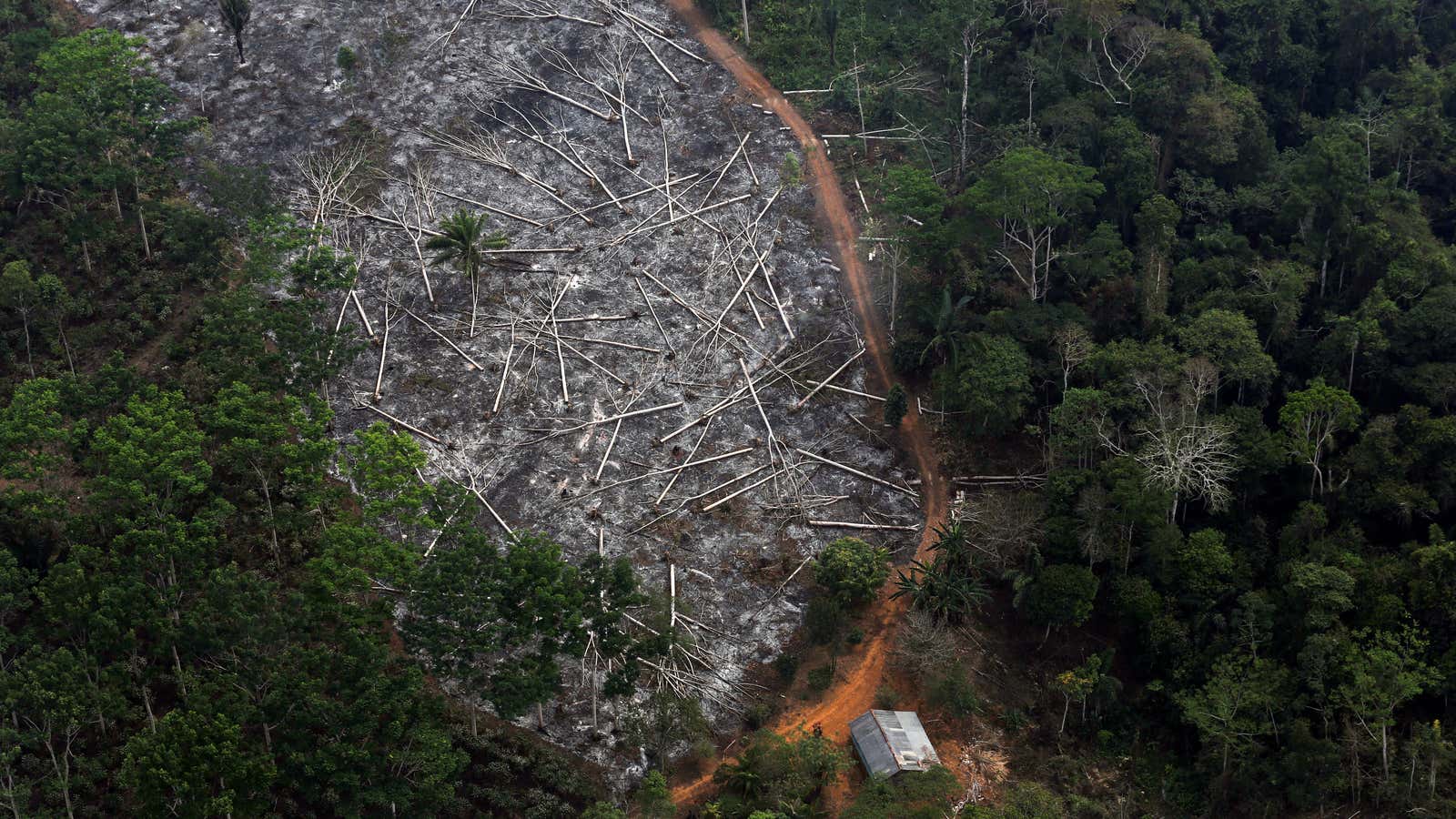Trees are disappearing from the Amazon rainforest of Brazil, and it’s put president Jair Bolsonaro in a bind.
His political coalition depends on the support of agribusiness-backed lawmakers, so Bolsonaro’s administration makes it possible for land-clearing that enables higher production and profits. But a regional trade deal with the European Union—and Brazil’s global reputation—also hangs on promises that the deforestation will be slowed.
There’s no hiding this conflict: Brazil’s government maintains a satellite database of deforestation, and issued an alert when it found that clear-cutting increased after Bolsonaro took office in January. When the president publicly called the satellite data “lies,” the respected head of Brazil’s National Institute of Space Research, Ricardo Galvão, defended his team’s research and was fired days later.
Bolsonaro suggested that Galvão was working for an international nonprofit, a familiar note in his campaign’s nationalist rhetoric, which claims that foreigners seeking to halt the country’s development are responsible for the criticism of Brazil’s environmental policies.
“Since his campaign, he represents his idea that it is a lie that Brazil is not complying with environmental regulations, and Brazil needs to grow and develop,” says Belén Fernández Milmanda, a Trinity College professor who studies land use and agrarian politics in South America, adding that in Bolsonaro’s view, “development comes from agriculture.”
He’s not entirely wrong. Brazil’s food exports have been rising thanks to insatiable demand for meat in China, where soybeans grown in Brazil are purchased for use as animal food.
A matter of reputation
But not every market is willing to look the other way when it comes to land-clearing. A trade deal struck in June between the European Union and Mercosur, an economic group that includes Argentina, Brazil, Paraguay, Uruguay, and Venezuela, is now up for final approval.
To protect the competitive advantage of European farmers, and because scientists believe protecting the still-massive Amazon rainforest is vital to slowing global climate change, the deal includes restrictions on Amazon deforestation. Critics of the agreement in Europe are likely to cite the data from Brazil’s National Institute of Space Research (known by its Brazilian acronym, INPE) showing that land-clearing increased 88% in July compared to the same month in 2018—before Bolsonaro’s election—as a reason not to approve the trade deal.

During his campaign, Bolsonaro railed against restrictions on agriculture and called for the elimination of the country’s Ministry of Environment. After his victory, according to Fernández Milmanda, he reversed the promise because agricultural exporters were worried it would hurt their image abroad. Still, he has cut funding for enforcement of environmental laws.
That’s why the independent satellite data is so important. Just as NASA’s climate change science provides a check on US environmental policies, the work of Brazil’s INPE can shine a light on inconvenient truths in Brazil. That’s one reason it’s likely to be politicized, or even cast as a foreign plot.
Indeed, some journalists have suggested that Galvão’s ouster was connected to a potential $8.5 million deal with the American satellite firm Planet to set up a rival monitoring program. Planet strenuously denied that this was the case, saying they have no deal with Brazil’s government and that the price doesn’t jibe with their offerings. The company also noted that they are a non-exclusive data provider, and information gathered by their satellites is already used by Brazilian environmental nonprofits like Mapbiomas to augment INPE’s data.
How to track a forest
INPE uses data from NASA satellites called Landsat to perform analysis of deforestation in the Amazon. The data allows for forest monitoring, but only at a medium resolution, showing about 30 meters per pixel, and the satellite only covers the area about once every three weeks. That allows for long-term comparison of biomass loss. But newer satellite systems like Planet’s gather daily images at 3 meters per pixel, providing actionable data for environmental regulators.
Planet is part of a project backed by Mapbiomas, Google and the Moore Foundation that is experimenting with real-time deforestation tracking in Brazil. When Landsat imagery shows reductions in forest, Planet’s data can follow through to see if lumber trucks are carting away logs or if irrigation systems are being set up for cattle ranches or soybean fields.
Using the INPE database, Quartz found these signs of deforestation outside the Jaru Biological Reserve in the state of Rondônia, which saw the highest rate of clear-cutting last year.

Then, we looked at the same area with Planet’s data platform, which showed a clear pattern of forest-clearing in the previous two years:
We don’t know if this particular development is against local rules, but the exercise gives you an idea of how environmental regulators could use this data along with property databases to investigate potentially illegal actions. Notably, it does not show a different result than the other satellites used by INPE.
“In recent years, what’s been incredible to see is that [satellite data] has become a transparency tool as well, not just a scientific one,” said Tara O’Shea, Planet’s director of forestry programs.
It remains to be seen whether that tool will be used by the current government in Brazil. Public opinion is mixed; former environmental ministers have publicly protested Brazil’s shift in environmental policy, but as Fernández Milmanda pointed out, “Bolsonaro won the election and he was very clear that protecting the forest is not part of his agenda.”
